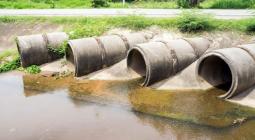SENEGAL: 3,500 illegal occupations obstruct water drainage in Dakar

In the city of Dakar in Senegal, urban planning and the fight against flooding are hampered by 3,546 illegal occupations.
In Senegal, a study by experts identified 3,546 cases of illegal occupations in Dakar, particularly near lakes and drainage structures. These are precisely 1,349 buildings already constructed, 905 buildings under construction and 1,234 plots for residential use. Figures confirmed by Mamour Diallo, the director general of the National Sanitation Office (Onas) of Senegal.
“The aim is to examine the exact legal nature of the targeted areas, to define the modalities of withdrawal if necessary or to suggest alternative actions. Indeed, we observe the need to continue efforts at urban restructuring and development of flood zones, but above all to ensure the restoration and preservation of natural outlets for rainwater,” explains Serigne Mbaye Thiam, the Senegalese Minister of Water and Sanitation.
If the census teams plead for the provision of local authorities with spatial planning documents (plans and urban master plans), the Senegalese government for its part plans to "liberate" the targeted areas in the coming months. A measure which should make it possible to avoid flooding and drownings through the strengthening of sanitation networks and the securing of Dakar's water retention basins.
It is that the capital of Senegal and other coastal cities of the West African country are vulnerable to climatic hazards. This is the case of Saint-Louis where the municipality is often powerless in the face of rising water levels during the rainy season. To remedy this in the long term, the Téranga government is implementing the Rainwater Management and Climate Change Adaptation Project ( Progep ). Financed by the Global Environment Facility (GEF) and the World Bank, the second phase mainly targets the construction of several pumping stations for the benefit of 237,000 inhabitants.





